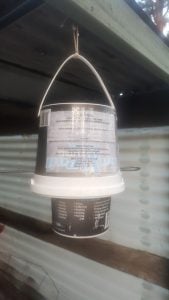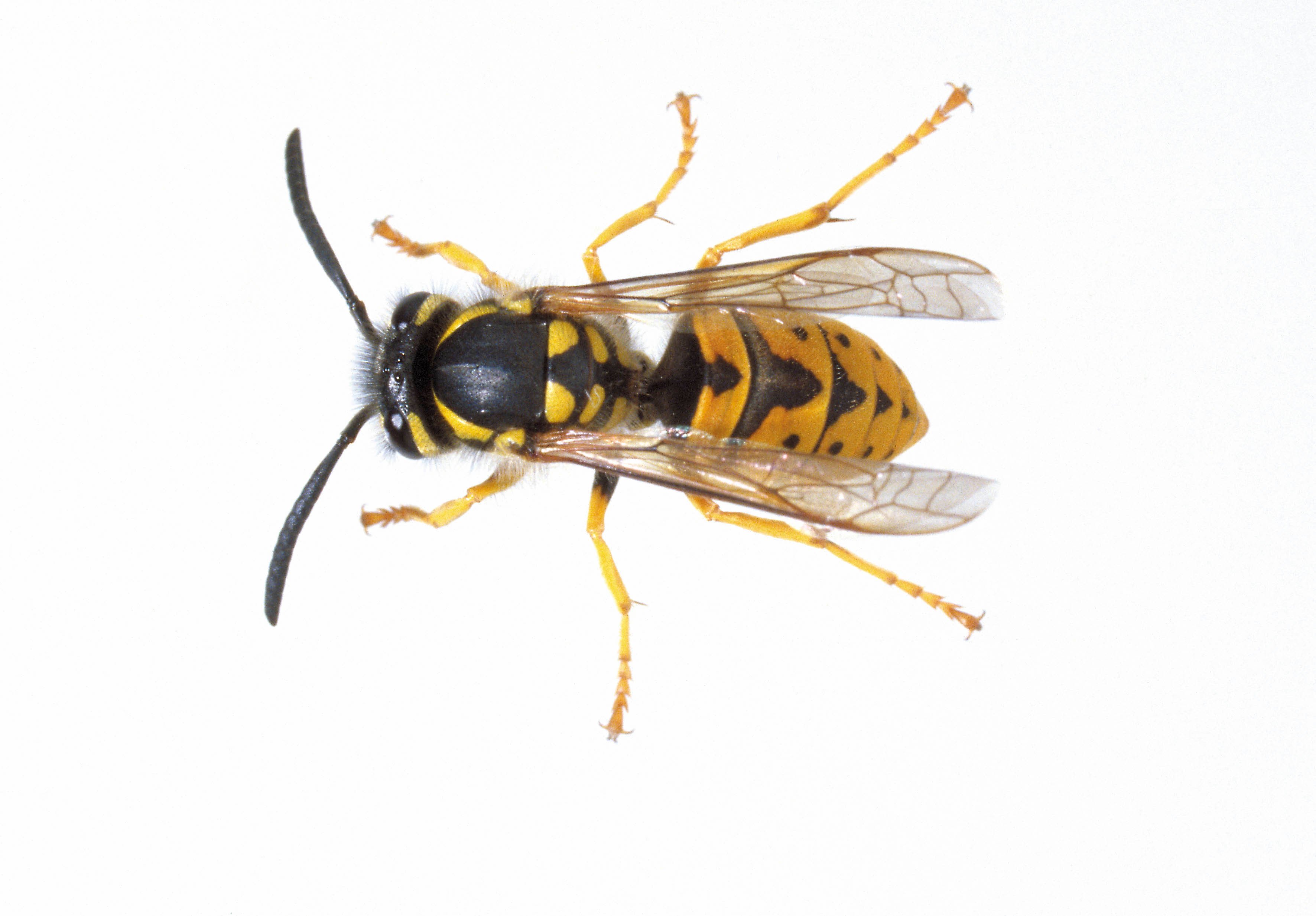European wasps can pose an OHS issue to pickers. Baiting is an important tool in the management of European wasps.
Wasps are a nuisance and OHS issue for pickers
European wasps are scavengers. They are attracted to sweet foods and meat and are commonly a nuisance at outdoor eating venues and barbeques. If left alone the European wasp is not aggressive to humans or other animals. If a European wasp is aggravated it may sting. If a nest is disturbed, the wasps release a chemical which triggers the colony to defend the nest and attack the threat in large numbers. Unlike honey bees, a European wasp can sting multiple times.
In orchards, European wasps are most likely to become an OHS risk when pickers disturb them whilst they are feeding on ripening fruit.
Fipronil permits allow for effective baiting
The chemical Fipronil has been shown to give effective control of European Wasp colonies when used in baiting stations according to directions specified in the APVMA permits PER87866 (Tasmania Only) and PER86492 (All States).
Pre-baiting or free-feeding with an untreated protein source is an important step in the baiting process. Baiting with chemical treated baits is best done once the wasps have found the bait stations and are visiting the bait in sufficient numbers as recommended in the permit documents.
Tinned cat food is a common protein source used in baiting stations.
Bait stations
A bait station can be constructed using two cans one smaller than the other. The smaller can is hung below the larger can with the bait placed inside. Suitable bait stations are also available to purchase from certain hardware and nursery stores. Whatever type of bait station you use, it must allow the wasps to enter, feed on the bait and then exit to return to the nest. Baits are most effective when placed 4 per ha or 1 per 100m along the boundary of a property. Ensure that your bait stations are appropriately labelled in accordance with the instructions in the relevant APVMA permit. Constantly monitor the bait station(s) and remove or relocate if attacked by ants or accessed by non-target species (such as bees).
Warning : The chemical Fipronil is highly toxic to bees and can cause significant losses if taken back to the hive. Closely observe bait stations during the free feeding period and DO NOT add Fipronil to the bait if bees are visiting the station.

European wasp baiting station made from buckets which allows wasps to return to nest

Modified trap with holes in the bottle to allow wasps to move in and out with ease (Photo: NSW DPI)
Essential Reading;
APVMA Permit PER86492 (All States) http://permits.apvma.gov.au/PER86492.PDF
NSW DPI European Wasp primefact https://www.dpi.nsw.gov.au/__data/assets/pdf_file/0007/556666/primefact-1370-european-wasp.pdf
NSW DPI Pilot Control Program 2018-19 (Vineyards) European-wasp-pilot-control-program-2018-19.pdf

